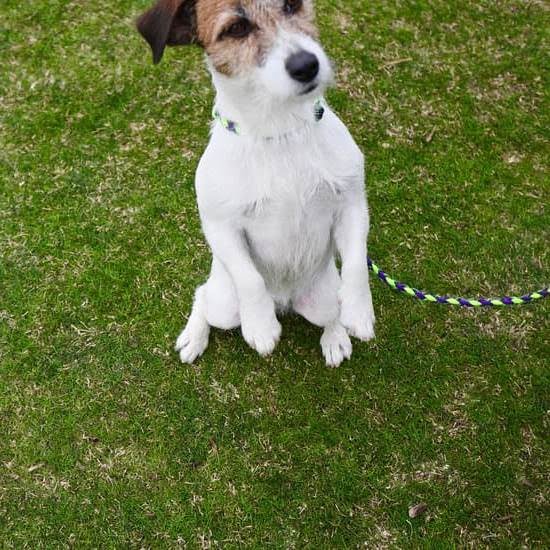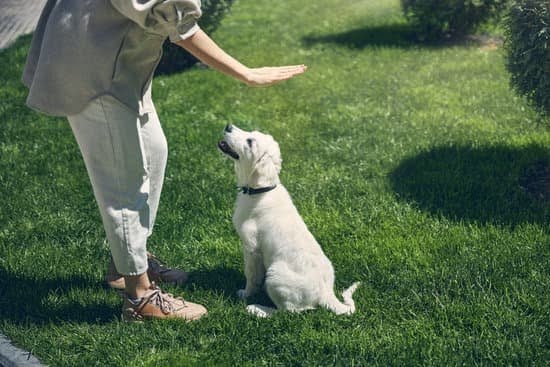Introduction
Training your dog to come when you call has many vital benefits. Most importantly, this essential command could one day save your dog’s life if they ever wander off and get lost. Ensuring that they obey the command “come” can help to prevent dangerous situations. Being able to get them to respond immediately also allows you to take greater control in a potential emergency situation. As well, being able to call your dog can provide multiple conveniences for everyday living by having a reliable way to return them back home or indoors if needed. A dependable “come” command makes outdoor activities far more enjoyable and safe for both you and your pet!
Preparation
To train your dog to come when called, you should prepare by gathering the right supplies and tools. You’ll need treats to reward your pup for successful responses and a long leash for safety when training in an area with any potential distractions. Additionally, it’s important to decide on a release command – the phrase you will use when you want your dog to stop working (and redirect their attention back towards you). Finally, an upbeat attitude, patience and consistent practice for your pup are all necessities for successful training.
Prior to initiating the training process, it is also important to ensure that your pooch is familiar with basic commands such as sit and stay. Dogs should first learn how to obey basic commands before mastering the more complex command of coming when called. Additionally, try not to get discouraged if results are not immediate and be prepared with plenty of treats and enthusiasm ready in order to keep your furry friend engaged during practice time. Once these preparatory steps have been taken, you can begin teaching your dog this useful skill!
Remember
Before you start training your dog to come when you call, it is important that your pup is familiar with their own name. This requires setting up time for you and your pooch where you can give them plenty of treats and verbal affirmations whenever they make eye contact or respond to their name. When it is just the two of you, begin calling their name from further distances and rewarding them when they come to you. Once your dog develops a positive connection with its name, start using it more frequently when engaging in daily activities like feeding or going out for a walk.
When consistently using their name throughout the day, gradually increase the distance between the two of you before giving them the command to come. Start with small increments like five feet away and work your way up. You can also use treat rewards for each success which will teach your pup that good things happen when responding to their name or the ‘come’ command. It can be helpful to practice in an enclosed area, such as an indoor room or backyard until your pup understands that coming back to you is always a desirable outcome. Additionally, teaching basic hand signals when calling them will help them learn quicker and reinforce positive behaviors associated with recall commands.
Making it Fun
One of the best ways to train a dog to come when you call is by using positive reinforcement tactics. Positive reinforcement is a great way to reward your pup for behavior you like, while teaching them that coming when they’re called is something that should be done. When they reach you after being called, it’s important to give them lots of treats and praise- both verbal and physical. Even a few seconds of cuddles afterwards will go a long way in getting them excited about coming back to you again! You can also make it fun by playing games like hide and seek or even bringing along an interesting toy for when your pup comes back to you. If these methods don’t work, then it may be time to try some additional training techniques. Just remember- always keep it positive!
Distractions
In order to successfully train your dog to come when you call under any conditions, it is important that distractions do not interfere with the process. You want your dog to learn that coming when you call is a priority no matter what other stimuli are present. To achieve this, start by setting up a distraction-free environment where your dog can focus exclusively on the task at hand— learning to come when called! After they have mastered the basic command of ‘come’ in this low-distraction setting, gradually bring new distractions into play by introducing them one at a time. It could be sounds like loud music or barking dogs, or situations where they encounter other people or animals—either indoors or outside. Always take things slow and make sure they have plenty of time and opportunity to master each new element before you move on—this will help ensure your pup has positive experiences during all stages of training and will minimize any feelings of anxiety or frustration which could occur if progress isn’t consistently made. With practice and patience over time, eventually, your pup will master the commands of ‘come’ regardless of their surroundings and put them into successful use!
Get Expert Help
When it comes to training your dog to come when you call, it is important to get expert help if needed. If you are having difficulty with the basics of obedience training (sit, stay, come), or if your dog’s behavior is not responding positively to training techniques, you should consider seeking professional help. Dog trainers have specialized knowledge and use advanced methods that can help modify a dog’s behavior, and provide an effective way to train a canine how to respond positively when encountering people or other animals. They also offer valuable advice when it comes to teaching basic commands like “come” and “stay”. A trainer may opt for reward-based dog training, which uses treats as incentives for good behavior, and ignores unwanted behaviors. Alternatively, they may suggest what is known as positive reinforcement, which involves rewarding a pet for obeying desired commands rather than punishing them for misbehaving. Additionally, some trainers specialize in particular areas such as Agility Training (where dogs are trained to race through obstacle courses) or scent work (where dogs learn how to identify certain smells). Whatever method they choose has been proven successful in getting a dog’s trust and obedience. Obtaining the help of certified professionals will ensure your pup receives the best instruction and support possible.
Try Games and Activities to Make Training More Fun
In order to make training a beloved pet enjoyable, it is important to use games and activities. The easiest way for dogs to learn how to come when you call is through positive reinforcement – this can be done through treats, toys, or even praise. Start by bringing the dog’s favorite toy outside, then throw it and encourage him/her to go fetch it. Once your pup has grabbed the toy and brought it back to you, offer a treat as reward and keep repeating! If a toy doesn’t seem to do the trick, try experimenting with other favorite activities like run-arounds in the park or backyard with treats at the end of each one. Switch up which activity you use each day in order to maintain their interest and keep them motivated. Additionally, if using verbal commands while playing these games it may deepen your bond and help speed along the learning process. Never forget that consistency is key as well – practice these activities often so they remain top of mind!
Celebrate Success
Training your dog to come when you call is an important part of being a responsible pet owner. Teaching your pup to respond to its name and return when called is essential for safety, as well as helping build trust between you and your pet. To get started on this important training process, here are some tips on how to teach your dog to come when you call:
1. Make sure to reward successful behaviors. When teaching any new command, positive reinforcement is key. It’s important that you celebrate successes with a reward of praise or treats so that your pet begins associating the desired behavior with something enjoyable for them. Whenever the dog returns successfully, make sure to give them lots of pats and a treat if available. Doing this helps solidify the desired behavior in their mind and encourages them to repeat it again in the future!
2. Start small, then work up from there Once you have a clear idea of what kind of response you want from your dog, start by working on teaching them in manageable chunks until they master each one before moving onto the next step. You might start by getting them used to responding when their name is said first – then build up from there until they understand coming back when called over larger distances and different types of terrain.
3. Make sure they’re always motivatedBoredom has no place in effective dog training – make sure that every time you go out practicing, both yourself and your pet are engaged and enthusiastic about what’s going on! Afterwards, ask yourself if it was fun for both of you and adjust accordingly so that next time can be even more enjoyable than before!
Ultimately, consistency is key! By gradually and patiently introducing new elements into the mix while rewarding successful behaviors every step of the way will help ensure success when teaching dogs how to come when called – good luck!
Summary and Reflection
Training your new dog to come when you call is a key part of having a happy, obedient pet. Teaching your pup basic commands will establish clear boundaries for them and help to ensure that they won’t wander off or become destructive. Training your dog doesn’t have to be a long and arduous task – all it takes is patience, consistency, and rewards.
Following the guidance provided above can help you train your pup more effectively. With consistent practices carried out each day, you have the chance to reinforce good habits and create reliable behaviors in the future. However, this process should not end once your dog learns the command – instead, continuous repetitions of the word will help solidify their understanding of what it means to “come when called”. The reward system also works best if used every time during practice sessions; with treats providing motivation on both an emotional and physical level. Although this training may seem arduous at times, it is worth the effort in order to prevent any unwanted behaviors from developing later on. In short, continuing to train your dog takes patience and dedication.

Welcome to the blog! I am a professional dog trainer and have been working with dogs for many years. In this blog, I will be discussing various topics related to dog training, including tips, tricks, and advice. I hope you find this information helpful and informative. Thanks for reading!





